If there’s one word that describes Denise Ranucci, of Ambler, Pennsylvania, it is perseverance. She battled flooding problems on her property for a decade, and even had her yard regraded. But it didn’t help.
This is an excerpt from the Wild Ones Journal
Current members can log in to read the latest issue or check out the Journal Archives.
“We were in new construction, and all the properties sank over time,” she said. Their home was the first in the neighborhood and became the lowest in the subdivision as other homes were built. And that turned her yard into something resembling a stream as the water drained down her property.
“We had a mess,” she recalled. Then one day, she was upstairs in her home, looking down at her backyard. She noticed what looked like a smaller river going through the property, and the proverbial light went on.
“I realized that nature always wins,” she said. So, she took classes, did some research, and decided to create a swale that would work with the water problems they had.
“I already had added a wildflower garden in the front, so I knew the advantages of native plants and how they attract more pollinators,” she said. “In those plantings, I used plugs and was surprised at how quickly the natives grew, how resilient they were in regard to both drought and our local wildlife like rabbits. But I was also amazed and the numbers of pollinators they attracted, every type of bee, various butterflies including monarchs and even hummingbirds… But I also knew how tough it was to lift sod.”
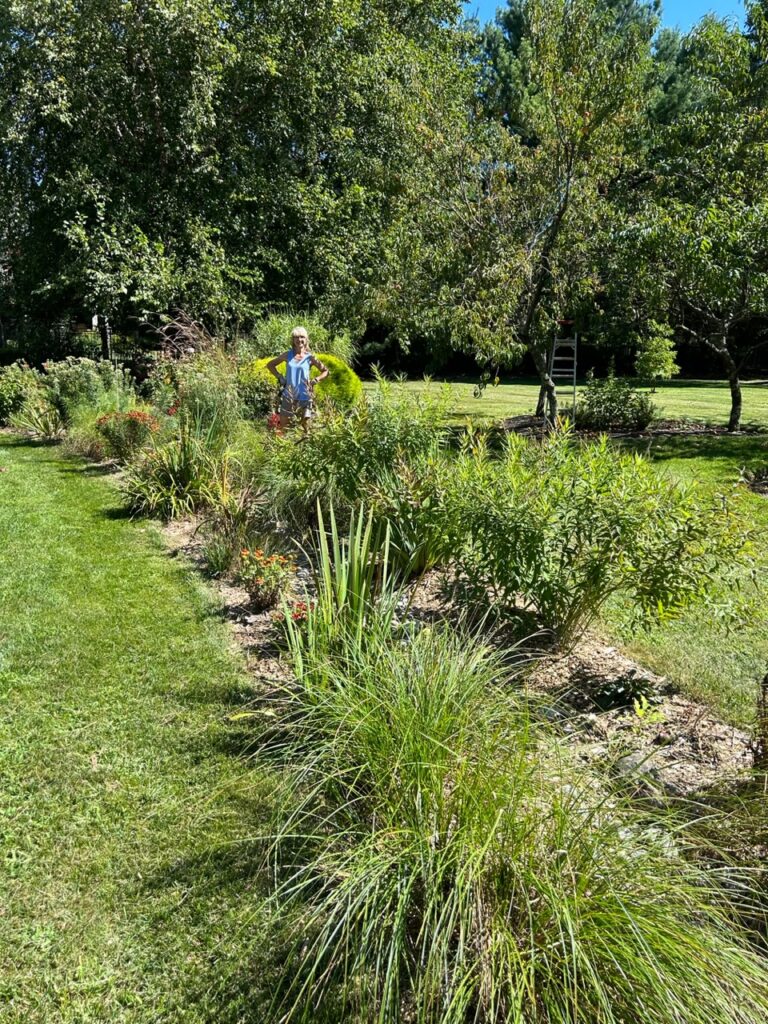
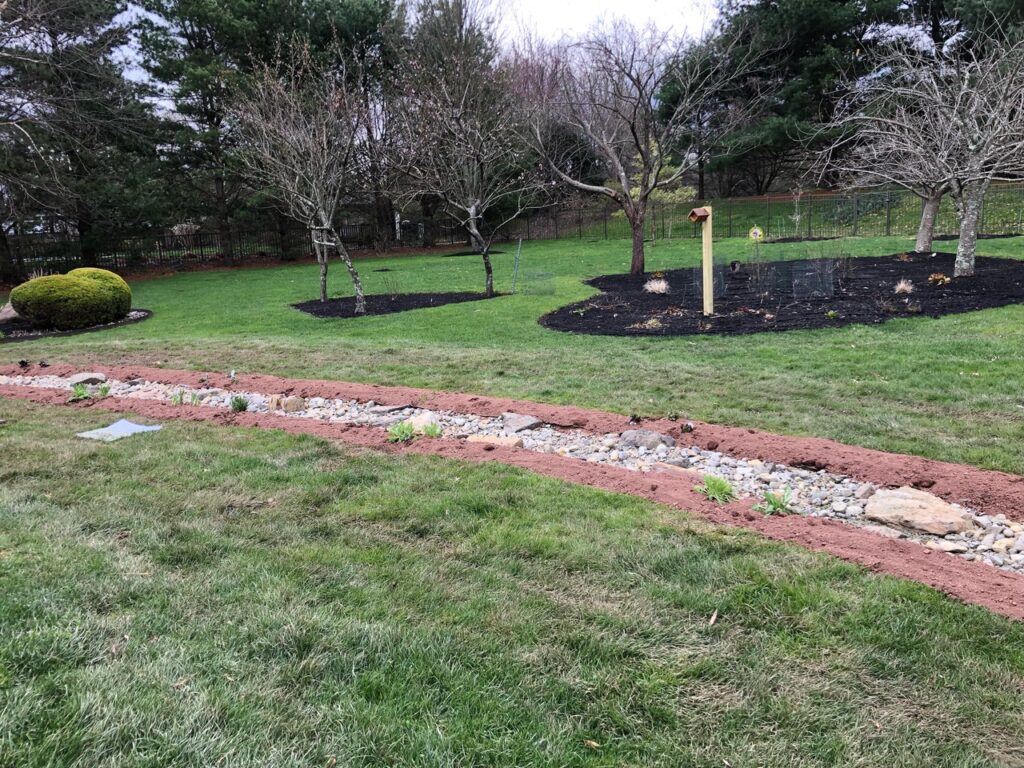
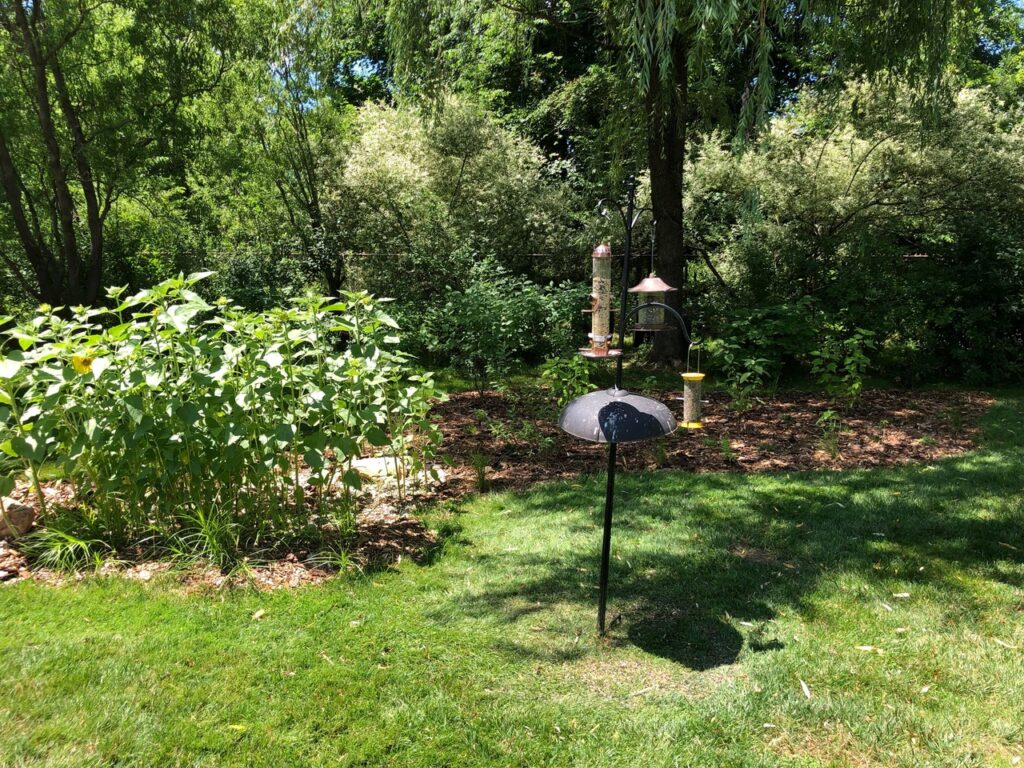
So Ranucci hired a landscaper to remove the sod after first creating a path with paint of the water’s natural flow while she, her husband, and friends did the rest of the work. “It took a few months overall, but I love working in the garden,” she said. They spent the spring and summer creating the swale, placing a biodegradable weed cloth, adding river rock in the center of the swale and larger steppingstones, and finally adding dirt to build up the sides. They also mulched the edges with natural chips and planted plugs of native plants.
And it worked. The swale winds across the backyard in a serpentine form, starting and ending in a bog or rain garden since that is where water still pools during a heavy downpour. It is about 4-5 feet wide and 150- feet long.
“The biggest maintenance was the first year,” she recalled. “We had planted plugs and raised sides with dirt and natural wood chips.” But in heavy rain, some of the dirt and chips would wash away. But as the plants became more established, that’s been less and less of a problem, Ranucci said.
“The swale is maturing beautifully and looks different every season,” she said. “It was certainly a lot of hard work to create, but I am overjoyed with the results.”
Ranucci said she has been a hobby gardener and hobby natu- ralist her entire life. But her interest in native plants began about four or five years ago when she started beekeeping with one hive that has since grown to four. She joined Wild Ones after her beekeeping club hosted a speaker from the Southeastern Pennsylvania chapter who taught the group about native bees, pollinator plants, and why native plants were more beneficial for insects and the environment in general.
Today she calls gardening her “therapy” from the stresses of her job as a physician, with a small greenhouse allowing her to keep her sanity when it’s too cold to be planting outdoors.
For those new to native gardening, she advised them to do their research first and not be afraid to make changes.
“I took some online and in-person classes … but I have some design flaws,” she said. For instance, the butterfly weed is hidden behind the monarda. “I move many things around; I’ve moved the plants under the fig tree three times!
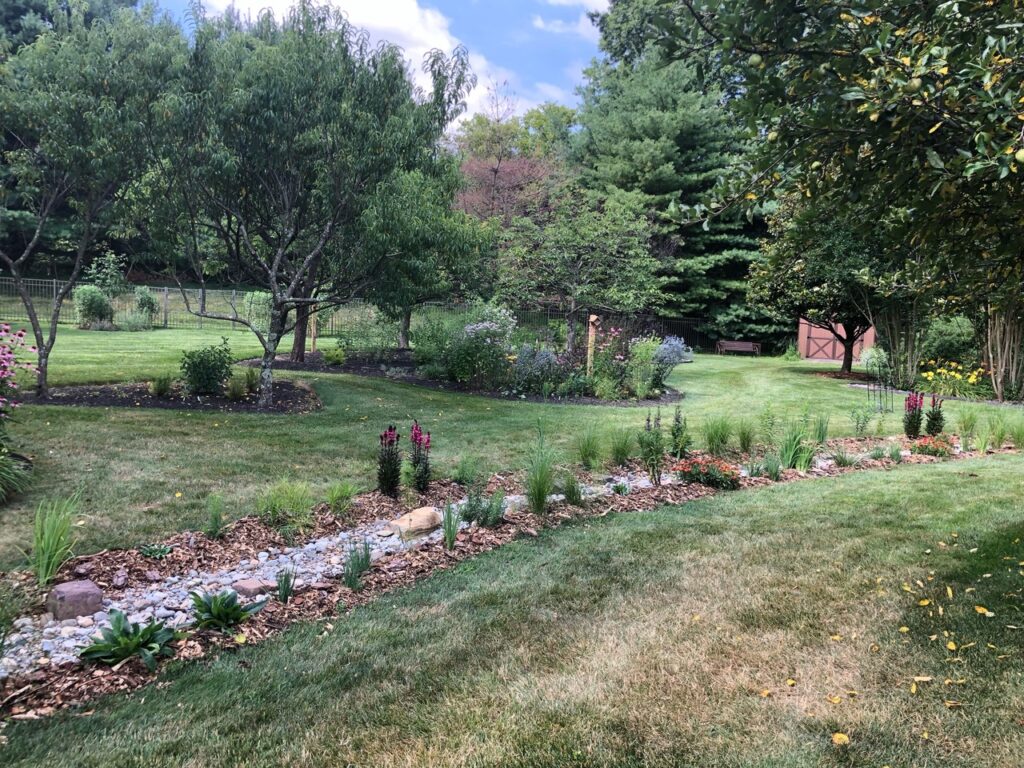
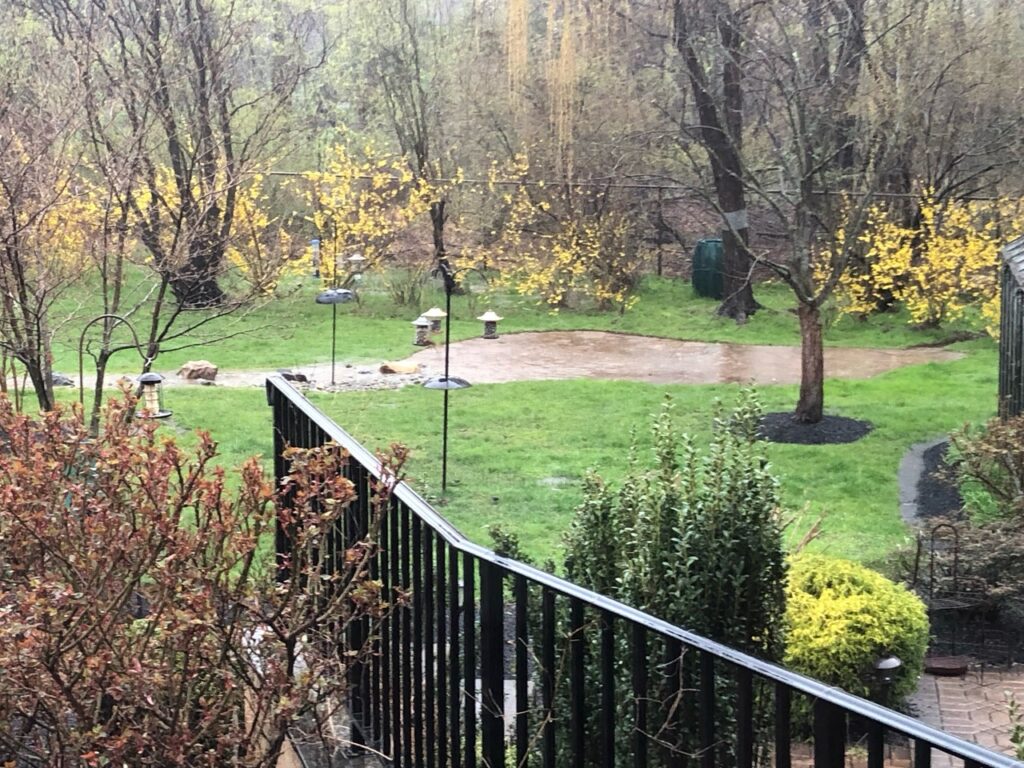
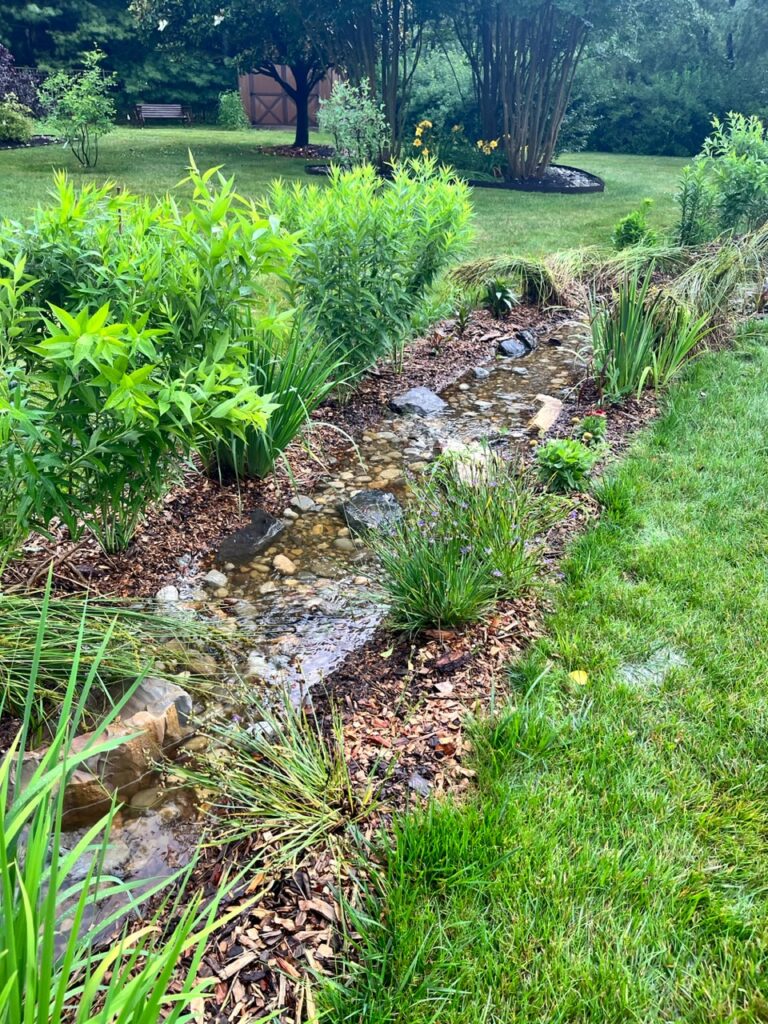
“There’s some hard work in- volved in the creation, but the end result is so amazing,” Ranucci said. “Part of the joy is watching your creation come to life; it’s like watching your children grow up. There’s something awe-inspiring that’s hard to define.”
And working in your garden is also good for your mental health, she said. “It actually helped my daughter deal with a bout of post-COVID isolation and depression. Just digging and getting dirty and being part of something bigger has an impact; it’s being part of nature!”
Ranucci said she covers some of her native plants with bird netting to keep away animals like rabbits. But she also has cocker spaniels that think they are hunters, so they chase other unwanted critters away. A wetland is located to the side of their property, so they do get visits from foxes and deer.
“They always eat my blazing star when it’s a newbie, so I cover those with black netting or put a chicken wire fence around it until it’s taller,” she said. But once the plants mature, the animals usually are not interested in those plants anymore.
Next to their patio is a miniature pond, about 4-feet by 4-feet that flows to a 10-foot basin and small waterfall. “It brings in frogs and tadpoles, and the sound of water is lovely in the evening, and we sit outside.
“If you build it, they will come,” she said. “You don’t have to be a Master Gardener [to create a native garden]. It’s OK to do small projects at first until you get better at it. You just need to make time for it.”
About the garden
- In 2021, Denise planted a native wildflower field in her front yard that takes up about one-third of the yard, and four native pollinator plant beds in the backyard, which also take up about one-third of the rear yard. The pollinator islands in the back mostly run up against her fence, with another beneath a peach tree and others between cherry trees. “I created the wildflower field and pollinator islands by smothering sod with cardboard for a season,” she said. “However, the swale was not conducive to cardboard smothering due to constant flooding.”
- She started the swale in her backyard in early spring of 2022, after first planning and sketch- ing out the swale for a few months during the winter. Previously, she also took online and in-person classes where she learned basic design principles, how to assess property, as well as how to plant in layers and achieve an informal, yet somehow organized look using native plants.
- Ranucci said she doesn’t have any favorite plants, but she does love button bush (Cephalanthus) because the fragrant round pin cushion blossoms are so distinctive and attract so many pollinators.
- About 80% of her plantings are native to Pennsylvania, including, to name a few, goldenrod, Virginia bluebell, butterfly weed, swamp milkweed and blue aster.
- Ranucci said her property’s highlights are the insects and animals that she now attracts. “My yard is filled with wrens, gold finches, blue jays, chickadees, robins and cardinals. My hummingbird feeder attracts various hummingbirds all summer, my native bee houses are filled with orchard bees in early spring and leaf cutter bees now, my honeybee apiary is busy and humming with my three hives…. my native garden truly feels like an oasis away from the world and it’s something I love to come home to after a long day at work.”
- Ranucci said she’s been asked by her chapter to present a program on her swale. “It’s great to get ideas from each other.”
Written by Barbara A. Schmitz.

